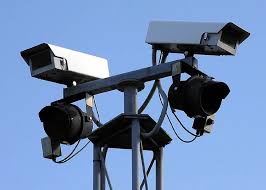Automatic Number Plate Recognition (ANPR) is a technology used to automatically read and recognize vehicle registration plates. ANPR systems use optical character recognition (OCR) to capture images of vehicles and their number plates, and then convert the images into machine-readable text.
ANPR systems are widely used in law enforcement agencies for various purposes such as traffic management, toll collection, parking management, border control, and crime prevention. The technology has proven to be an effective tool in identifying stolen or wanted vehicles, detecting unregistered or uninsured vehicles, and tracking the movement of suspicious vehicles.
One of the main advantages of ANPR technology is its speed and accuracy. ANPR cameras can capture multiple license plates per second, making it possible to monitor traffic flow in real-time without causing any delays or disruptions. The system can also identify license plates from different angles and under various lighting conditions with high accuracy.
In addition to law enforcement agencies, ANPR systems are also being used by private organizations for parking management. ANPR cameras can be installed at entrances and exits of parking lots to automatically read license plate numbers of vehicles entering and leaving the premises. This eliminates the need for physical tickets or passes, making the process more efficient and convenient for both customers and operators.
However, there are concerns about privacy with the use of ANPR technology. Critics argue that collecting data on vehicle movements could lead to invasion of privacy if not properly regulated. To address these concerns, many countries have implemented laws that regulate the use of ANPR systems and limit access to collected data.
In conclusion, Automatic Number Plate Recognition technology has proven to be a valuable tool in law enforcement agencies and private organizations alike. While there are concerns about privacy issues associated with its use, proper regulations can help ensure that ANPR systems are used ethically and responsibly. As advancements continue to be made in this field, we can expect to see more innovative applications of this technology in the future.
6 Tips for Ensuring Accuracy, Compliance, and Security in Automatic Number Plate Recognition Systems
- Ensure that the ANPR system is regularly maintained and updated to ensure its accuracy and reliability.
- Make sure that the ANPR system is in compliance with all applicable laws and regulations.
- Make sure that the data collected by the ANPR system is securely stored and protected from unauthorized access or use.
- Establish an appropriate authorization process for accessing the data collected by the ANPR system, such as requiring a valid ID or password for access to it.
- Consider using encryption when transmitting data from an ANPR system over a network connection to ensure its security against interception or manipulation by hackers or other malicious actors.
- Develop policies and procedures for how long data collected by an ANPR system can be stored, who has access to it, and how it can be used in order to protect privacy rights of individuals whose license plates are captured by the system
Ensure that the ANPR system is regularly maintained and updated to ensure its accuracy and reliability.
When it comes to Automatic Number Plate Recognition (ANPR) systems, accuracy and reliability are of utmost importance. ANPR systems rely on optical character recognition (OCR) technology to capture images of license plates and convert them into machine-readable text. However, like any technology, ANPR systems can encounter problems such as errors in reading license plate numbers or misidentifying vehicles.
To ensure that your ANPR system is operating at its optimal level, regular maintenance and updates are necessary. This includes cleaning the cameras and lenses to ensure clear images, checking the software for any bugs or glitches, and updating the system with the latest OCR algorithms.
Regular maintenance can help prevent issues such as false readings or missed license plates, which can lead to incorrect data being collected. Inaccurate data can have serious consequences for law enforcement agencies and private organizations that rely on ANPR systems for traffic management, toll collection, parking management, and crime prevention.
Updating the system with the latest OCR algorithms is also crucial in ensuring accuracy and reliability. OCR algorithms evolve over time as new technologies emerge, so it’s important to keep up with these advancements to ensure that your ANPR system is using the most up-to-date technology available.
In conclusion, regular maintenance and updates are essential for maintaining the accuracy and reliability of your ANPR system. By taking these steps, you can ensure that your ANPR system is operating at its optimal level and providing accurate data that can be used effectively by law enforcement agencies and private organizations alike.
Make sure that the ANPR system is in compliance with all applicable laws and regulations.
When implementing an Automatic Number Plate Recognition (ANPR) system, it is crucial to ensure that it is in compliance with all applicable laws and regulations. This includes laws related to data privacy, security, and surveillance.
ANPR systems have the capability to collect and store large amounts of data on vehicle movements, which can raise concerns about privacy and surveillance. To ensure that the system is used ethically and responsibly, it is important to comply with all relevant laws and regulations.
For example, in India, the Information Technology (Reasonable Security Practices and Procedures and Sensitive Personal Data or Information) Rules, 2011 require organizations to implement reasonable security practices to protect sensitive personal data. This includes data collected through ANPR systems.
In addition, the use of ANPR systems for surveillance purposes may be subject to specific regulations depending on the jurisdiction. It is important to research and comply with any applicable laws or regulations related to surveillance activities.
By ensuring compliance with all applicable laws and regulations, organizations can ensure that their ANPR system is used ethically and responsibly. This not only helps protect individual privacy rights but also promotes trust in the technology among stakeholders such as customers, employees, and regulatory authorities.
Make sure that the data collected by the ANPR system is securely stored and protected from unauthorized access or use.
When it comes to Automatic Number Plate Recognition (ANPR) technology, one of the most important considerations is data security. ANPR systems collect vast amounts of data on vehicle movements and license plate numbers, which can be sensitive information if not properly protected.
To ensure that the data collected by ANPR systems is secure, it is essential to implement strong security measures. This includes using encryption and access control mechanisms to protect the data from unauthorized access or use.
Encryption can help protect sensitive data by converting it into an unreadable format that can only be deciphered with a decryption key. Access control mechanisms, such as passwords or biometric authentication, can help ensure that only authorized personnel have access to the data.
Additionally, it is important to regularly monitor and audit ANPR systems to detect any potential security breaches or unauthorized access attempts. This can help identify and address any vulnerabilities before they are exploited.
By taking these measures, organizations can ensure that the data collected by ANPR systems is securely stored and protected from unauthorized access or use. This not only helps safeguard sensitive information but also helps build trust with customers and stakeholders who rely on these systems for various purposes such as traffic management, parking management, and crime prevention.
Establish an appropriate authorization process for accessing the data collected by the ANPR system, such as requiring a valid ID or password for access to it.
When it comes to Automatic Number Plate Recognition (ANPR) systems, ensuring the security and privacy of the data collected is of utmost importance. One way to ensure this is by establishing an appropriate authorization process for accessing the data.
This can be done by requiring a valid ID or password for access to the data collected by the ANPR system. This ensures that only authorized personnel have access to the sensitive information. It also helps prevent unauthorized access or misuse of the data.
Having a strong authorization process in place can also help in case of any security breaches or data leaks. By limiting access to only authorized personnel, it becomes easier to identify who may have accessed the data and take appropriate action.
In addition, having an appropriate authorization process in place can also help build trust with customers and stakeholders. It shows that you take their privacy seriously and are committed to protecting their personal information.
Overall, establishing an appropriate authorization process for accessing ANPR system data is a crucial step towards ensuring its security and privacy. It not only helps prevent unauthorized access but also builds trust with customers and stakeholders.
Consider using encryption when transmitting data from an ANPR system over a network connection to ensure its security against interception or manipulation by hackers or other malicious actors.
When it comes to Automatic Number Plate Recognition (ANPR) systems, security is a top priority. ANPR cameras capture sensitive data such as license plate numbers and vehicle movements, making it crucial to protect this information from interception or manipulation by hackers or other malicious actors.
One way to ensure the security of ANPR data is by using encryption when transmitting it over a network connection. Encryption is the process of converting data into a coded language that can only be deciphered with a specific key or password. By encrypting ANPR data, it becomes unreadable to anyone who does not have the proper decryption key.
Encryption can be implemented at various stages of the ANPR system, including during transmission over a network connection. This ensures that even if someone intercepts the data being transmitted, they will not be able to read or manipulate it without the proper decryption key.
Using encryption for ANPR data transmission is especially important for law enforcement agencies and other organizations that handle sensitive information. It helps to prevent unauthorized access and protects against cyber attacks that could compromise the integrity of the ANPR system.
In conclusion, considering using encryption when transmitting data from an ANPR system over a network connection is an important step in ensuring its security. By implementing encryption at various stages of the ANPR system, organizations can protect sensitive information and prevent unauthorized access or manipulation.
Develop policies and procedures for how long data collected by an ANPR system can be stored, who has access to it, and how it can be used in order to protect privacy rights of individuals whose license plates are captured by the system
Automatic Number Plate Recognition (ANPR) technology has become a valuable tool in law enforcement agencies and private organizations for various purposes such as traffic management, toll collection, parking management, and crime prevention. However, with the increasing use of ANPR systems comes concerns about privacy issues.
It is important for organizations using ANPR systems to develop policies and procedures for how long data collected by the system can be stored, who has access to it, and how it can be used. These policies should be designed to protect the privacy rights of individuals whose license plates are captured by the system.
The length of time that data is stored should be limited and only kept for as long as necessary. Access to the data should also be restricted to authorized personnel only. This ensures that sensitive information is not misused or accessed by unauthorized individuals.
Furthermore, organizations should clearly outline how the data collected by ANPR systems will be used. This includes specifying which departments or personnel have access to the data and under what circumstances it can be accessed. Policies should also outline how the data will be used in investigations or other law enforcement activities.
By developing clear policies and procedures for ANPR systems, organizations can ensure that they are using this technology in an ethical and responsible manner while protecting individual privacy rights. It is important that these policies are regularly reviewed and updated to keep up with changing laws and regulations surrounding privacy rights.



